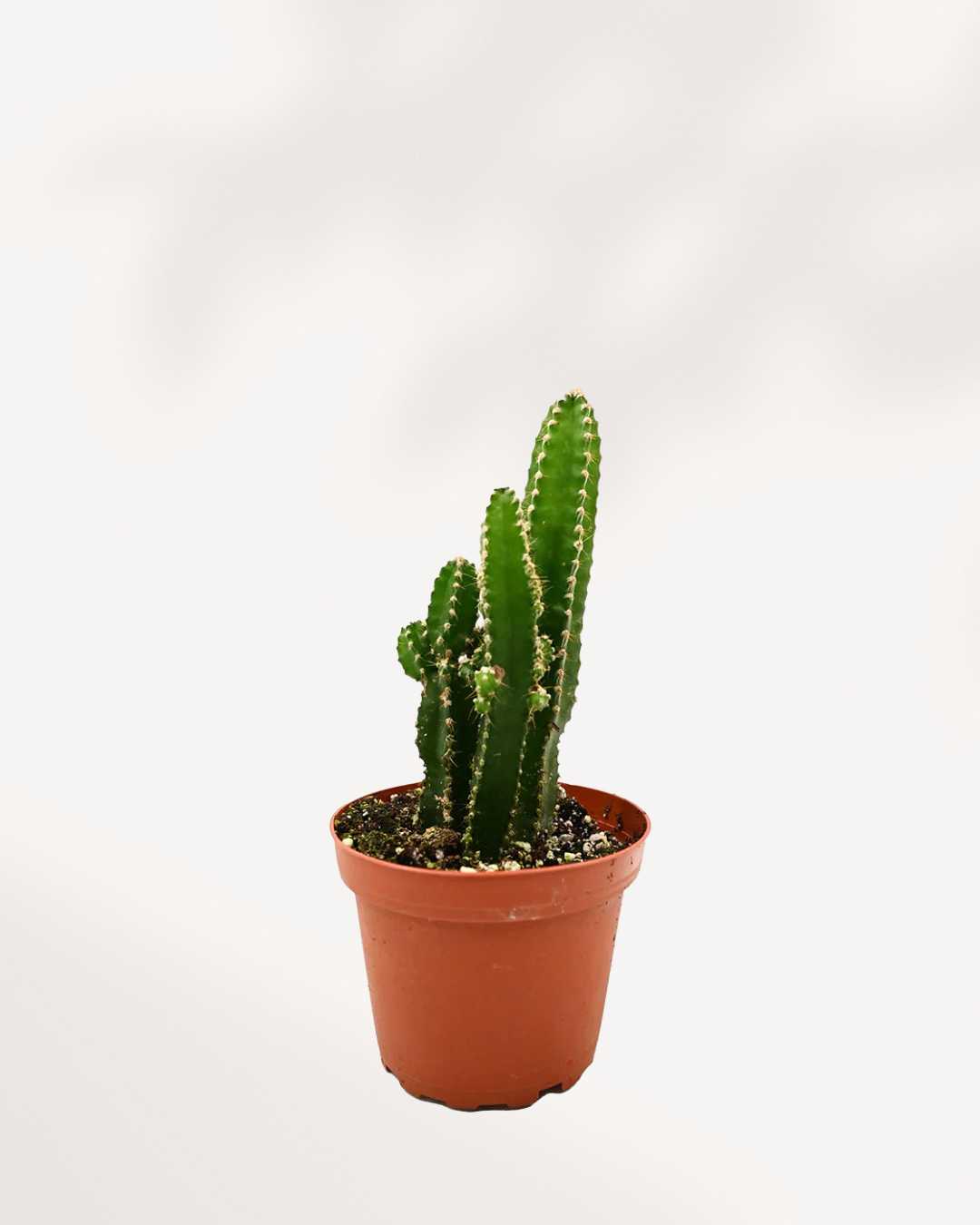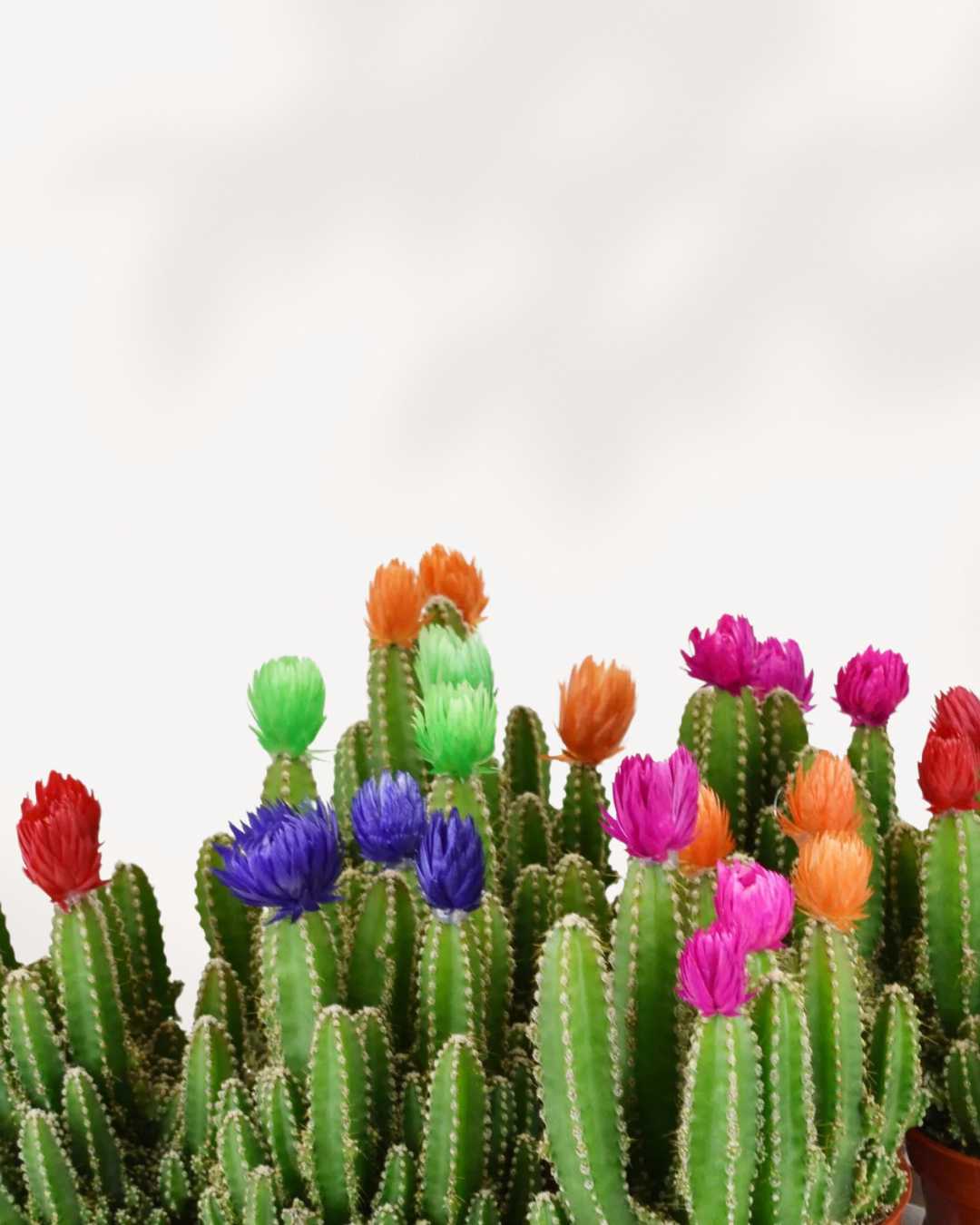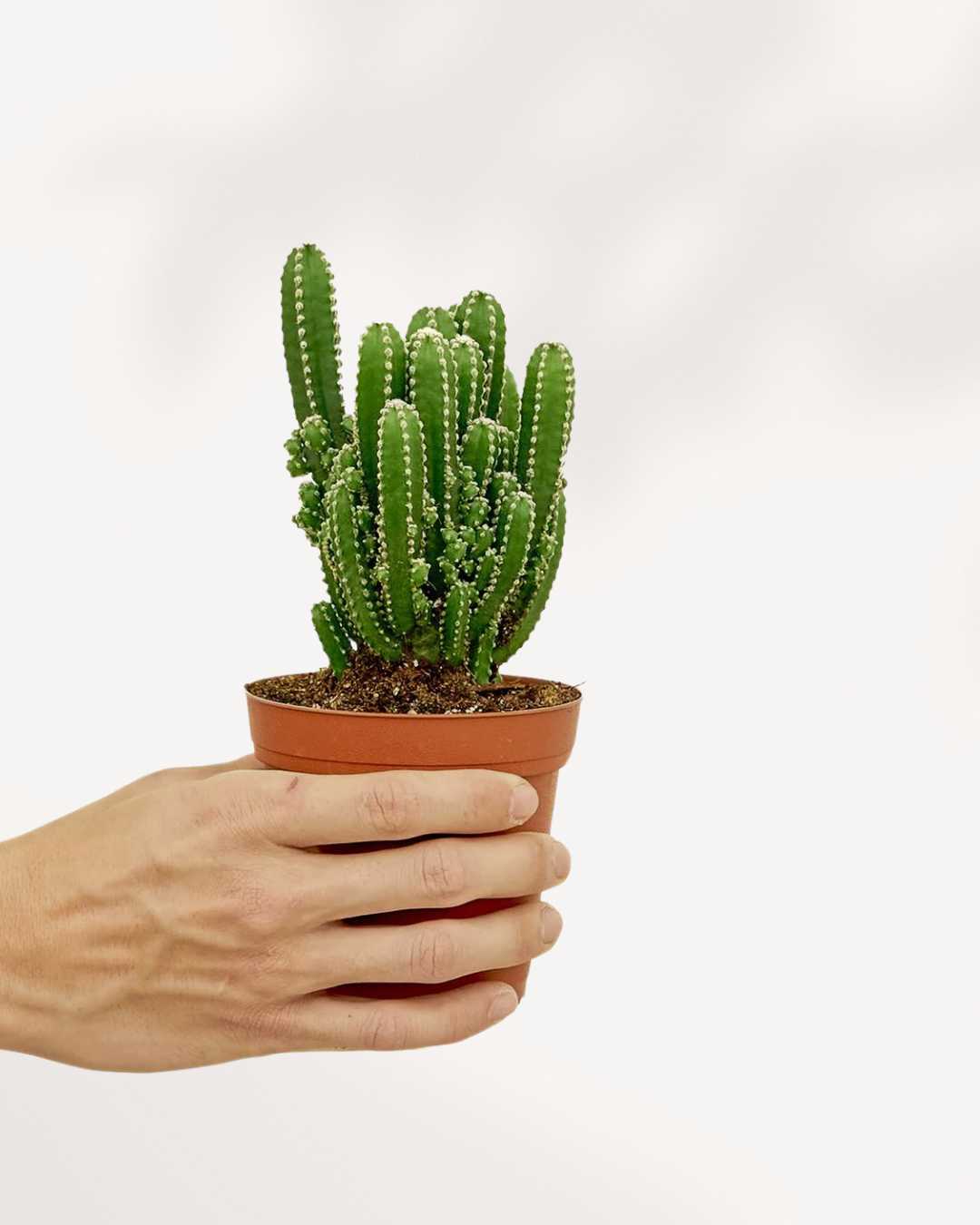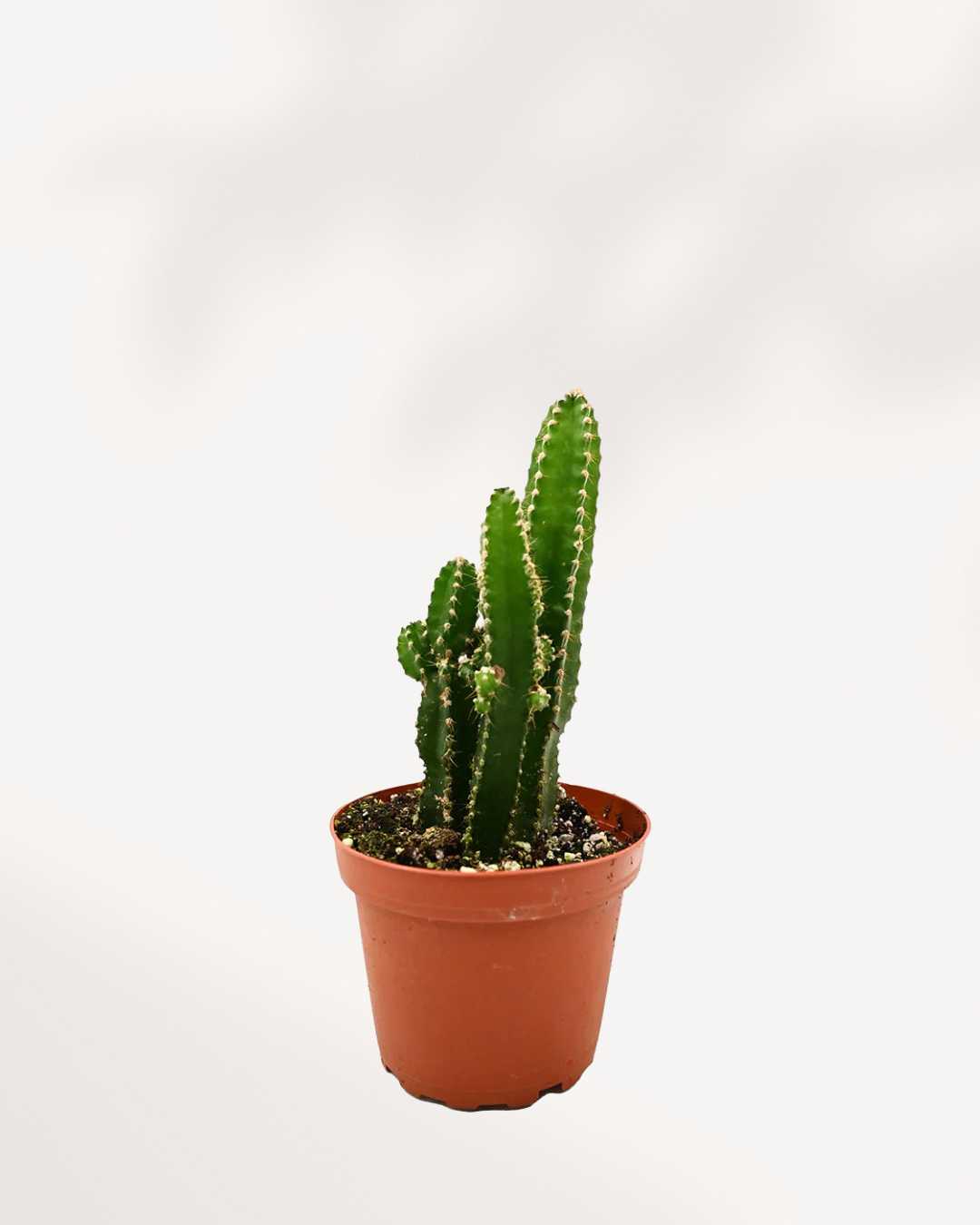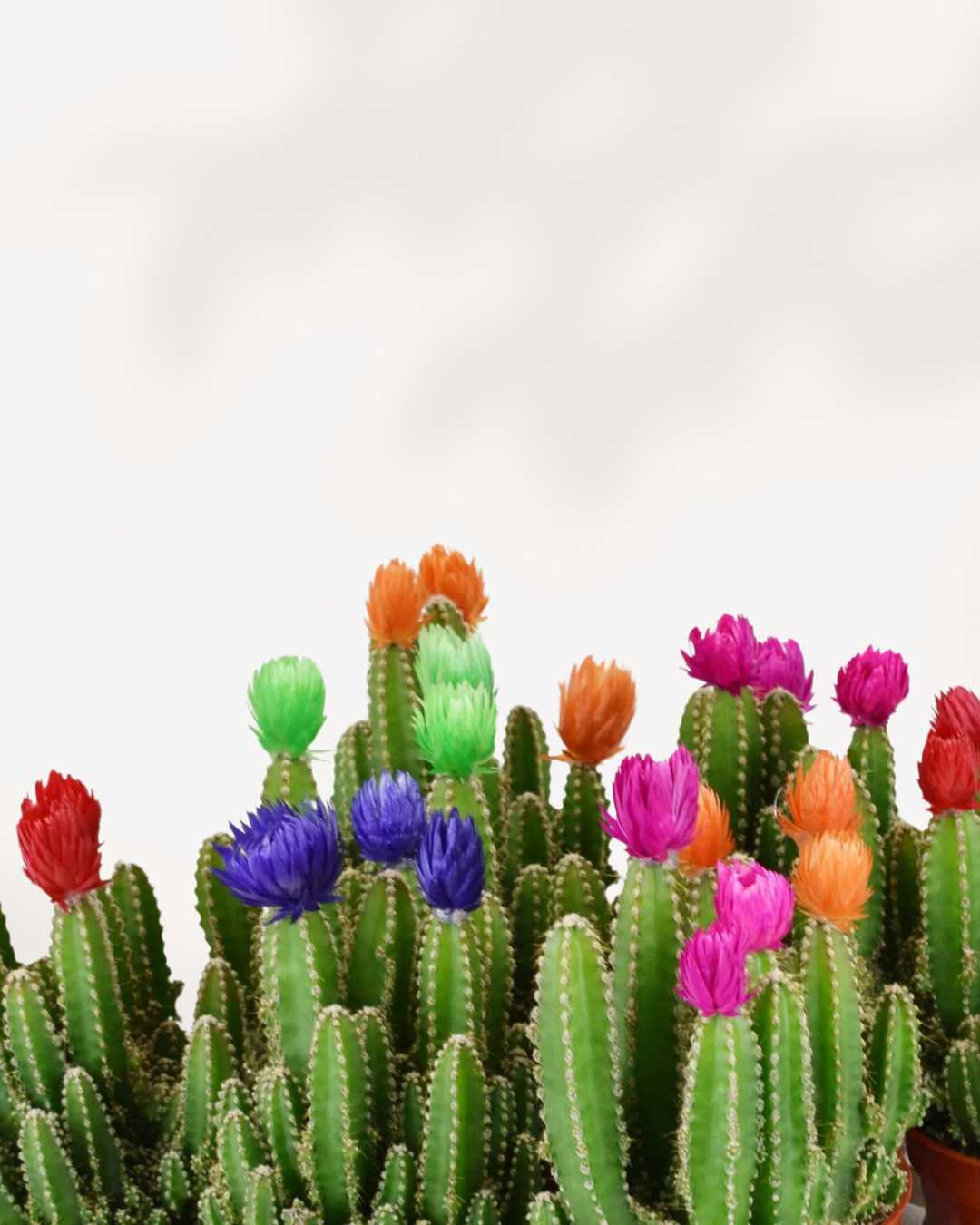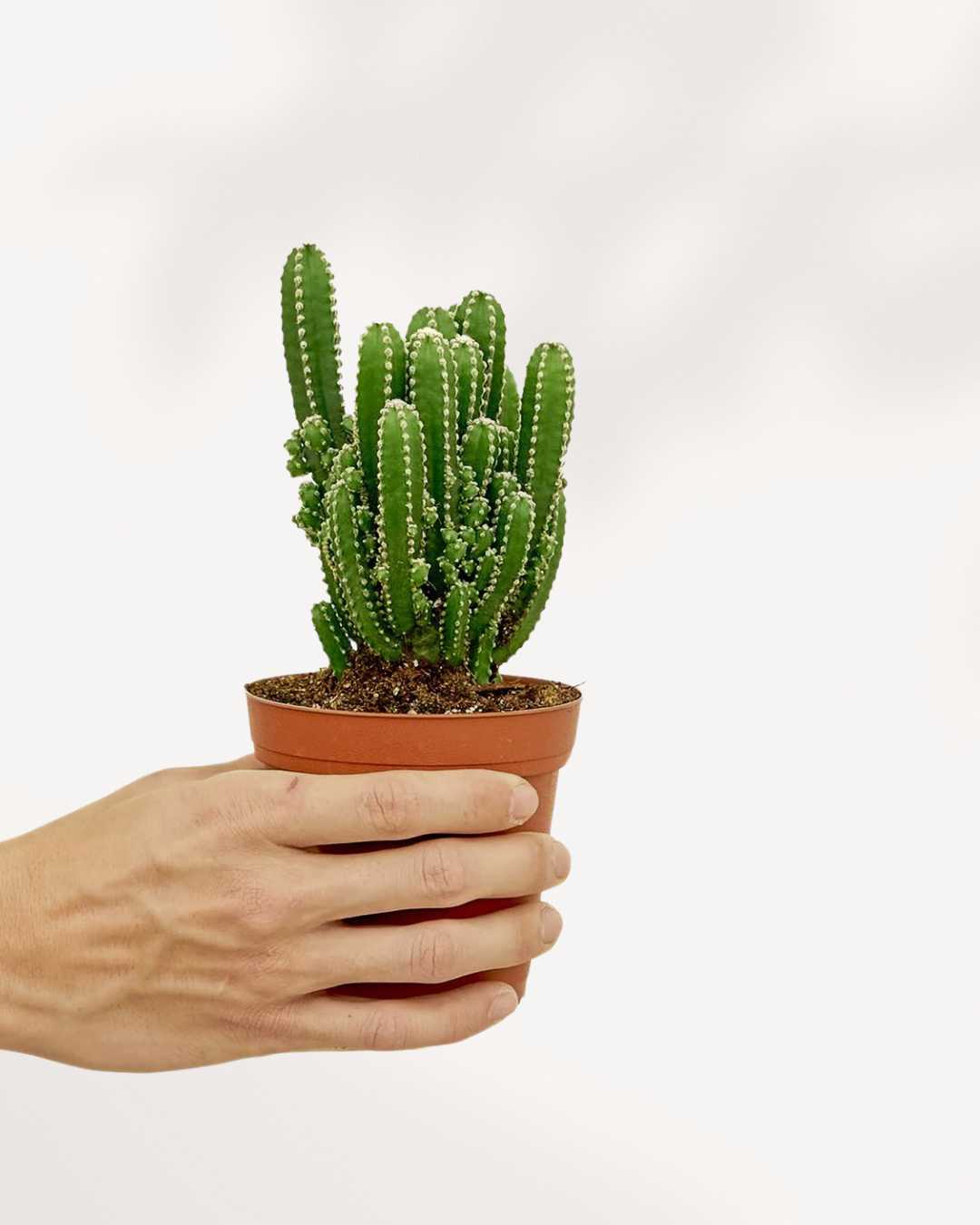Fairy Castle Cactus
Fairy Castle Cactus
Fairy Castle Cactus, scientifically known as Acanthocereus tetragonus, is a whimsical and low-maintenance cactus with columnar stems resembling castle turrets. Its unique, architectural growth pattern and easy-care nature make it a favorite for both succulent enthusiasts and beginner plant owners. Native to the Americas, this charming cactus thrives in bright light and well-draining soil.
Common Names
- Fairy Castle Cactus
- Castle Cactus
- Triangle Cactus
Botanical Classification
- Kingdom: Plantae
- Order: Caryophyllales
- Family: Cactaceae
- Genus: Acanthocereus
- Species: Acanthocereus tetragonus
Native Habitat
Fairy Castle Cactus originates from the arid regions of North, Central, and South America. It grows in sandy, rocky soils under bright, sunny conditions, making it well-suited for indoor environments with adequate light.
Historical and Cultural Significance
Known for its enchanting appearance, Fairy Castle Cactus has become a symbol of resilience and creativity. Its slow-growing nature and unique form make it a popular choice for whimsical décor and succulent arrangements.
Uses and Popularity
Fairy Castle Cactus is widely used as a decorative plant in homes and offices. Its architectural form adds height and visual interest to succulent gardens, terrariums, and windowsill displays. Its low-maintenance requirements make it ideal for busy individuals or novice gardeners.
Conservation Status
Fairy Castle Cactus is not endangered and is widely available through nurseries and online stores, ensuring easy access for cactus enthusiasts.
Description
Physical Characteristics
Fairy Castle Cactus features columnar stems that grow in clusters, resembling the turrets of a castle. The stems are dark green with small spines and may reach up to 6 feet tall in optimal conditions. Although flowering is rare indoors, it may produce small white or yellow blooms in its natural habitat.
Growth Habit
This slow-growing cactus has an upright growth habit, making it ideal for small pots, larger planters, or as part of a succulent arrangement. It thrives in bright light and requires minimal watering, making it a versatile addition to any collection.
Popular Succulent Varieties
Jade Ovata Shrek
- Features tubular leaves that resemble “Shrek” ears.
String of Pearls
- Trailing succulent with bead-like leaves, perfect for hanging baskets.
Living Stone Lithops
- Stone-like succulents that blend into rocky environments.
String of Hearts - Pretty Pink
- Trailing succulent with heart-shaped pink and green leaves.
Care Guide
Light Requirements
Fairy Castle Cactus thrives in bright, direct sunlight but can tolerate partial shade. Place it near a sunny windowsill or under grow lights for optimal growth. Learn More
Watering Needs
Water sparingly, allowing the soil to dry out completely between waterings. Overwatering can cause root rot. During winter dormancy, reduce watering frequency. Indoor Plant Watering Guide
Soil Preferences
Use a well-draining cactus or succulent mix with added sand or perlite for aeration. Indoor Potting Mix
Fertilization
Feed with a diluted cactus fertilizer every 4-6 weeks during the growing season (spring and summer). Avoid fertilizing in winter. Bios Natural Fertilizer
Common Pests
Spider Mites
Spider mites thrive in dry conditions and can cause stippling on leaves. Increase humidity and treat with insecticidal soap. Learn More
Mealybugs
Mealybugs appear as white, cottony masses. Remove them with rubbing alcohol or use insecticidal soap. Learn More
Fungus Gnats
Overwatering can attract fungus gnats. Allow the soil to dry out and use sticky traps to control infestations. Learn More
FAQs
Can Fairy Castle Cactus tolerate low light?
It prefers bright, direct sunlight but can adapt to partial shade. Prolonged low light may slow its growth.
Is Fairy Castle Cactus pet-friendly?
No, this cactus is toxic to pets if ingested. Keep it out of reach of cats and dogs. Pet-Friendly Plants
How often should I water Fairy Castle Cactus?
Water sparingly, typically every 2-3 weeks during the growing season, and reduce watering in winter.
Can it grow outdoors?
Yes, in warm climates with temperatures above 50°F (10°C). Ensure it is placed in a sunny spot with well-draining soil.
Couldn't load pickup availability
Low stock: 6 left
View full details